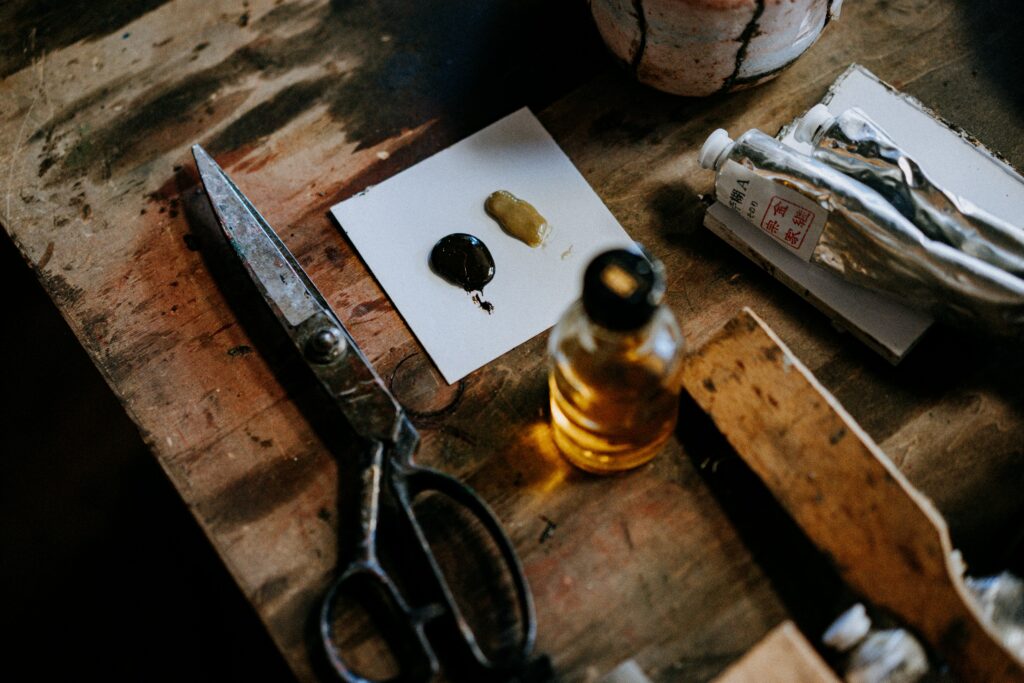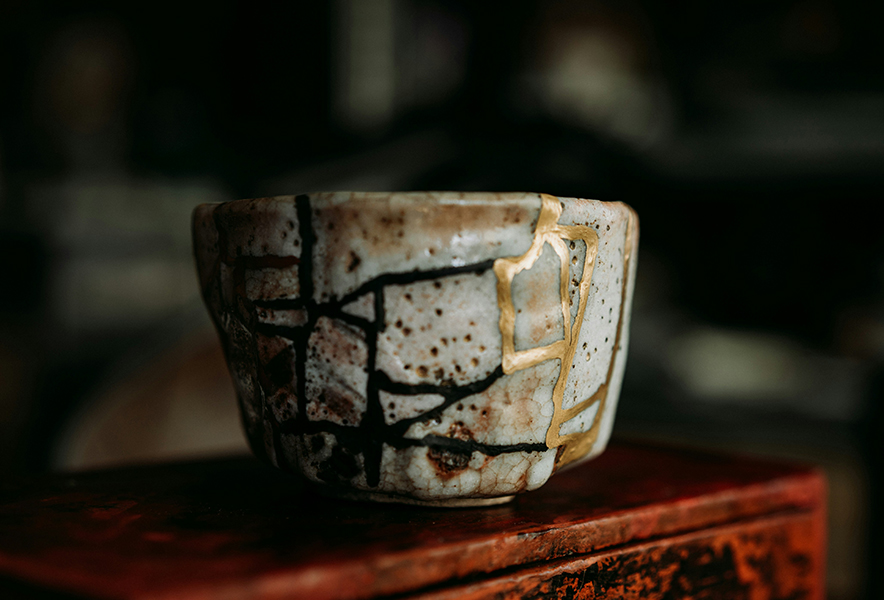Introduction: Kintsugi as a Traditional Art
Kintsugi (金継ぎ) is a traditional Japanese restoration technique in which broken ceramics and porcelain are repaired with gold powder or lacquer. This technique is not only a restoration, but also an art of creating new beauty. Not only does it give new value to objects and connect the broken past with the present, but it is also attracting attention as a hobby in the Corona Disaster and the recent rise of the SDGs.

History:Origins and Development
Kintsugi has a long history, dating back to the Muromachi period, although its exact origins are not known. From the Muromachi period to the Edo period, kintsugi was mainly used to restore expensive and beautiful objects such as tea ceremony utensils and gifts. This technique not only prolonged the life of the object, but also provided a means of establishing a deeper bond between the owner and the object by giving the restored item a new luster.

Technique: Kintsugi Processes and Procedures
The kintsugi process is precise and requires experience and skill.
First, broken pieces of ceramics or porcelain are joined together and glued together using lacquer glue.
Next, gold or silver powder is sprinkled over the lacquered area. The gold powder gives an elegant shine and creates a beautiful pattern in which the restored area blends with the rest of the piece.
Finally, the piece is finished by coating it with lacquer to ensure durability.
Through this process, the seams become a new pattern and the vessel is revived as a one-of-a-kind piece.

Philosophy: The Philosophy of Broken Beauty
Kintsugi is imbued with the philosophy of ‘broken beauty’. Chipped or broken parts are not mere flaws, but symbolize the history and experience of the object. Kintsugi does not deny the ‘flaws’ of an object, but on the contrary, embraces them and enhances the unique value of the object by bringing it back to life in a beautiful way. This philosophy is shared by the people and is widely passed down as part of Japanese culture, which values the wisdom and virtues gained through past failures and wounds.
Inheritance to the Modern Age and International Attention
Inheritance to the Modern Age and International Attention
In recent years, kintsugi has been attracting attention both in Japan and abroad for its beauty and philosophical aspects. In Japan, its position as a traditional craft has been further strengthened, and many artists and craftsmen are creating works that incorporate kintsugi. Internationally, the philosophy of kintsugi, which embraces flaws and past flaws as beauty, is attracting attention as it resonates with cultures that value stories and uniqueness.

Furthermore, the reuse and resale of discarded ceramics through kintsugi can be seen as a contribution to waste reduction and environmental conservation. In this sense, Kintsugi is contributing to a sustainable society.
Summary: The Beauty of Kintsugi and the Human Bond
Kintsugi is more than just a restoration technique; it is a fusion of beauty and philosophy, a symbol of the link between the past and the future. Broken objects take on a new luster, deepening the relationship between owner and object, while its philosophy evokes widespread sympathy among people. Kintsugi culture continues to permeate not only Japan but also the world as an important means of building deep human bonds as well as a beautiful art form.

